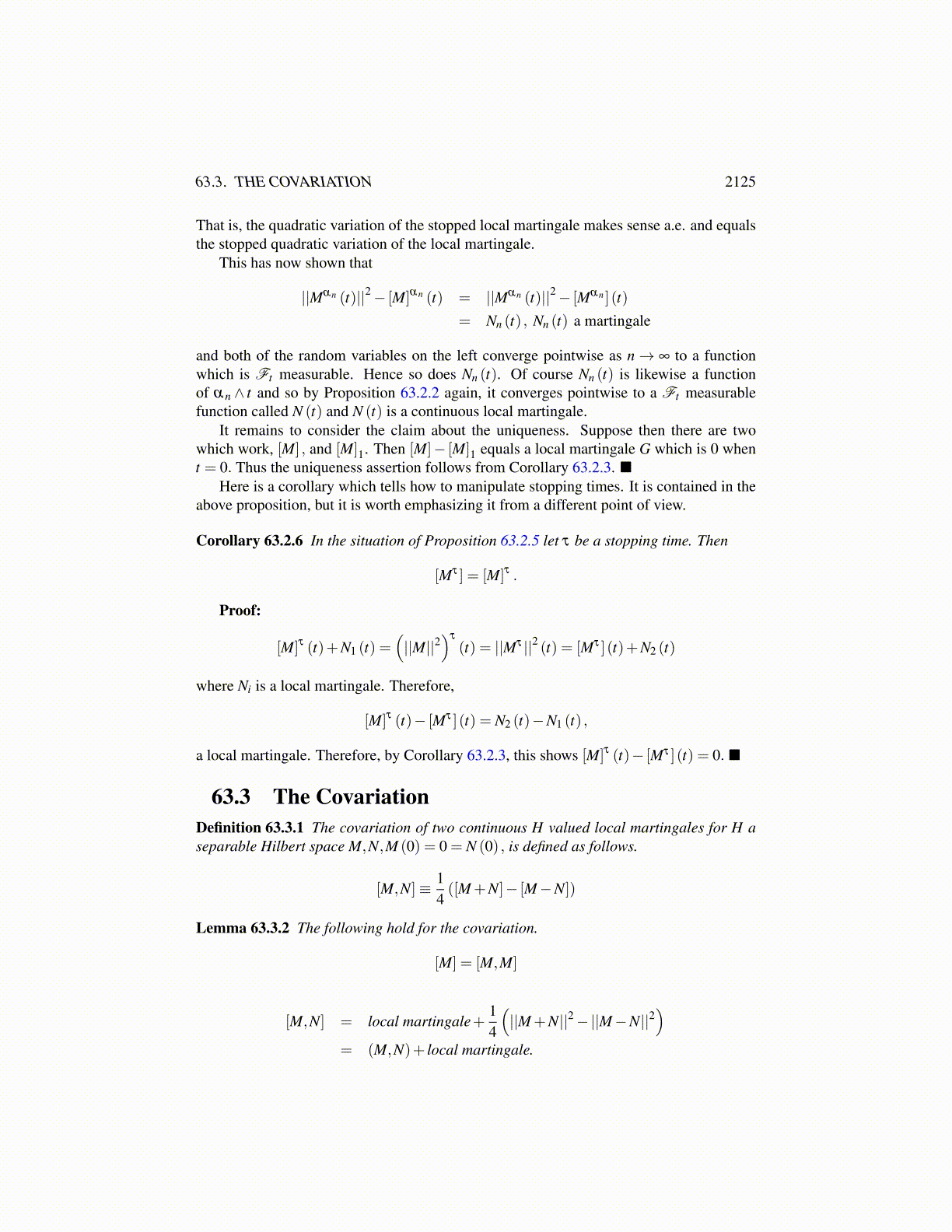
63.2. THE QUADRATIC VARIATION 2125
Note the Doob theorem applies because σ ∧τnk+1 is a bounded stopping time due to the fact
σ has only two values. Similarly
E
(q
∑k=0
(M (τn
k) ,(M(t ∧ τ
nk+1)−M (t ∧ τ
nk))))
=q
∑k=0
E((
M (τnk) ,(M(t ∧ τ
nk+1)−M (t ∧ τ
nk))))
=q
∑k=0
E((
E(M (τn
k) ,(M(t ∧ τ
nk+1)−M (t ∧ τ
nk)))|Fτn
k
))=
q
∑k=0
E((
M (τnk) ,E
(M(t ∧ τ
nk+1)−M (t ∧ τ
nk))|Fτn
k
))=
q
∑k=0
E((
M (τnk) ,E
(M(t ∧ τ
nk+1∧ τ
nk)−M (t ∧ τ
nk))))
= 0
It follows each partial sum for Pn (t) is a martingale. As shown above, these partial sumsconverge in L2 (Ω) and so it follows that Pn (t) is also a martingale. Note the Doob theoremapplies because t ∧ τn
k+1 is a bounded stopping time.I want to argue that Pn is a Cauchy sequence in M 2
T (R). By Theorem 62.9.4 andcontinuity of Pn
E
((supt≤T|Pn (t)−Pn+1 (t)|
)2)1/2
≤ 2E(|Pn (T )−Pn+1 (T )|2
)1/2
By 63.2.8,
≤ 2−nE(||M (T )||2
)1/2
which shows {Pn} is indeed a Cauchy sequence in M 2T (R).
Therefore, by Proposition 62.12.2, there exists {N (t)} ∈M 2T (R) such that Pn→ N in
M 2T (H) . That is
limn→∞
E
(sup
t∈[0,T ]|Pn (t)−N (t)|2
)1/2
= 0.
Since {N (t)} ∈M 2T (R) , it is a continuous martingale and N (t) ∈ L2 (Ω) , and N (0) = 0
because this is true of each Pn (0) . From the above 63.2.5,
||M (t)||2 = Qn (t)+Pn (t) (63.2.9)
whereQn (t) = ∑
k≥0
∣∣∣∣M (t ∧ τnk+1)−M (t ∧ τ
nk)∣∣∣∣2